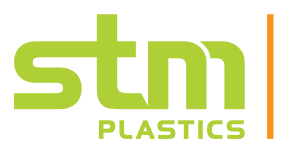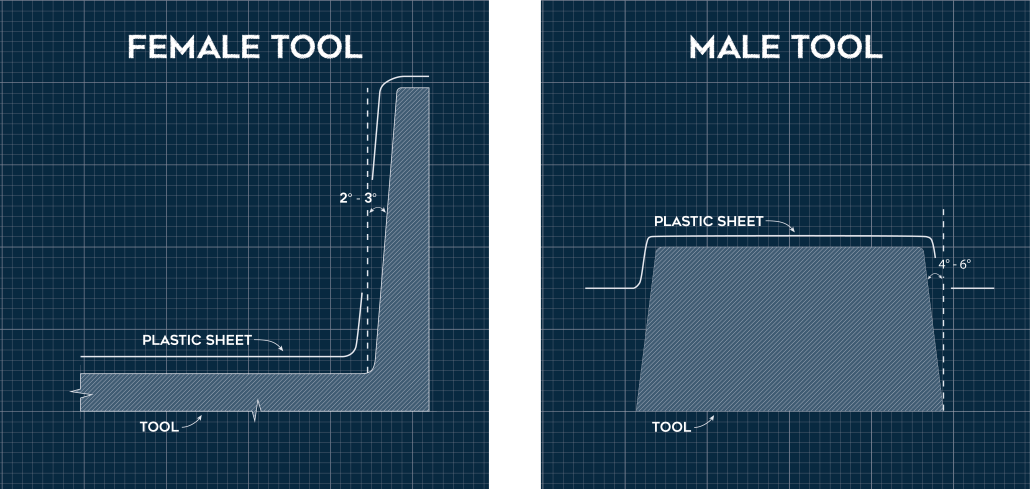Thermoforming Design Guidelines
Thermoforming offers flexibility and cost-effectiveness in manufacturing a wide range of plastic parts. To ensure a successful and efficient project, here are a few design considerations:
1. Draft Angles
- Draft angles ensure easy release of the formed part from the mold. They allow the plastic to shrink slightly upon cooling without binding to the mold surface.
- Typical Recommendation:
- Vertical drafts on female features: 2° to 3°
- Vertical drafts on male features: 4° to 6°
- Special design features or deep parts may require adjusted draft angles to prevent thinning or tearing of the material.
2. Corner Radii
- Rounded inside and outside part edges aid in even material flow during forming, prevent thinning, improve part strength, and reduce stress concentrations.
- General Rule: The radius should be at least one-third of the part depth. Deeper parts typically require a larger radius to prevent excessive thinning. In general, bigger is better.
3. Draw Ratio
- The draw ratio compares the part’s depth to its surface area. A higher draw ratio means a deeper “draw” from the flat plastic sheet, potentially making the forming process more complex.
- Standard Limits: A 1:1 draw ratio is generally advised. Deeper ratios may require special forming techniques, plug assists, or multi-part molds, all potentially adding to costs.
4. Undercuts
- Negative draft areas, called undercuts, can impede part removal from the mold. They often require more complex and costly tooling solutions.
- If Necessary, design undercuts strategically, and carefully consider alternative design features. Some undercuts may be made possible only via specialized techniques, such as collapsible mold cores.
5. Materials
- Thermoforming works with various thermoplastic materials, each with distinct properties. Consider these factors when selecting your material:
- Cost
- Strength and Rigidity
- Impact Resistance
- Temperature Resistance
- UV Resistance (for outdoor applications)
- Chemical Resistance
- Food Contact Certification (if applicable)
- Common Thermoforming Plastics and Their Applications:
- ABS: Good impact resistance, surface finishes, and formability. Uses include equipment enclosures, automotive parts, toys.
- Acrylic: Excellent clarity and weather resistance. Widely used in point-of-purchase displays, signs, and skylights.
- Polycarbonate: Incredibly tough and durable. Suitable for demanding applications like riot shields, machine guards, and medical devices.
- HIPS (High-Impact Polystyrene): Low-cost and formable material, common in single-use or disposable items like food packaging and refrigerator linings.
- Polyethylene (PE): Flexible, chemical-resistant with various densities (HDPE, HMWPE). Uses range from bottles, chemical tanks, and cutting boards.
- Polypropylene (PP): Rigid, impact-resistant, and resistant to many chemicals. Used extensively in trays, containers, and automotive parts.
Collaboration is Key
Consult with us early in your design process to save time and money. We can guide you to the most appropriate material and forming method for your unique requirements.
Ready to Start? Contact us today to discuss your project and how thermoforming can bring your project to life!


